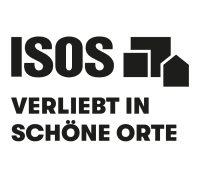Leuk
Hint
Intro
The small medieval town of Leuk can be found amidst hillside vineyards above the Rhône Valley in the canton of Valais. It offers beautiful views of the Pfyn-Finges Forest and is known for its variety of towers.
Leuk at a glance
In the Middle Ages, Leuk was considered one of the most important towns in the Upper Valais. Thanks to its location on the hillside and being the only way through the Rhône Valley at that time, the town controlled the traffic routes between Brig and Sion. In the 16th and 17th centuries, Leuk experienced its architectural heyday, as evidenced by former stately patrician houses. With the opening of the road through the Pfyn-Finges Forest in the first half of the 19th century, Leuk became a more tranquil place, today inviting visitors to relax in Leukerbad a little higher up the hillside.
Leuk lies amidst terraced vineyards on the southern slope above the Rhône. A variety of towers can be seen from afar, clearly defining the skyline of Leuk. These include the Ringacker Chapel, the former Viztum Castle, which today serves as the town hall, and the unrendered tower of the parish church, regarded as one of the most beautiful examples of a Romanesque church tower in Valais. Equally striking is the Bishop’s Castle. This was renovated by Ticino architect Mario Botta, who crowned the crested tower with today’s well-known impressive glass cupola.
Also worth a visit is the seat of the Werra family, an old Valais noble family. It is one of the most magnificent secular buildings in Valais. The original Baroque manor house was completely rebuilt around the year 1800 and extended in the classical style.
ISOS
ISOS is the Federal Inventory of Swiss Heritage Sites of national importance. The inventory is maintained by the Federal Office of Culture (FOC) and lists the most significant settlements in Switzerland. Today, some 1,200 places are included in the inventory, from hamlets right through to cities. The inventory provides information on the development and identity of the settlements listed in it, thereby contributing to the preservation of architectural diversity in Switzerland and promoting both sustainable planning and a high-quality Baukultur.








